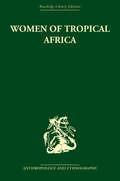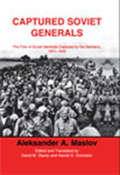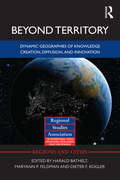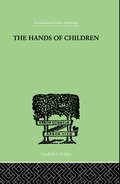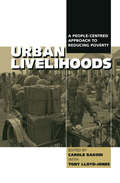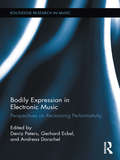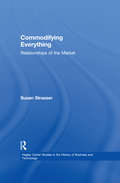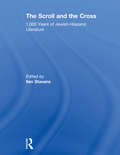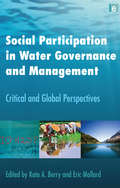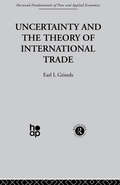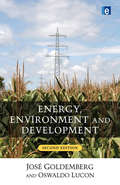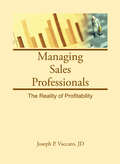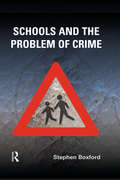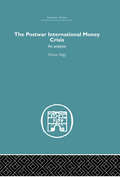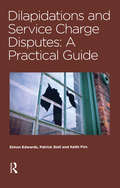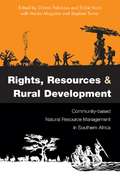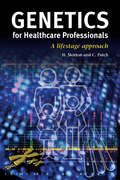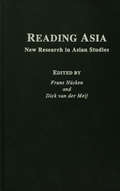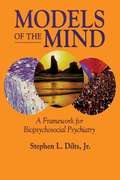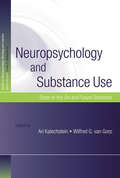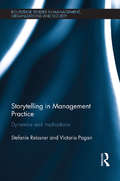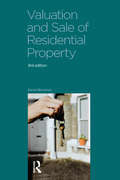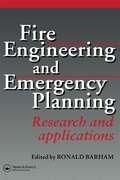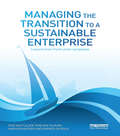- Table View
- List View
Women of Tropical Africa
by Denise Paulme H. M. WrightThis book is unique in its approach in that each chapter covers women in their everyday lives and the problems, which concern them. Until now, ethnographic research has almost always been carried out with the help of the male population and as a result the picture that has emerged has been largely the image, which the men, and the men alone, have of their society. Originally published in 1963.
Captured Soviet Generals: The Fate of Soviet Generals Captured in Combat 1941-45
by A.A. MaslovThe true story of the fate of the captured Russian Generals after World War II, explaining how these officers endured horrific prison conditions and were then tried and executed when they returned home.
Beyond Territory: Dynamic Geographies of Innovation and Knowledge Creation (Regions And Cities Ser. #47)
by Harald Bathelt Maryann P. Feldman Dieter F. KoglerThe main purpose of the book is to discuss new trends in the dynamic geography of innovation and argue that in an era of increasing globalization, two trends seem quite dominant: rigid territorial models of innovation, and localized configurations of innovative activities. The book brings together scholars who are working on these topics. Rather than focusing on established concepts and theories, the book aims to question narrow explanations, rigid territorializations, and simplistic policy frameworks; it provides evidence that innovation, while not exclusively dependent on regional contexts, can be influenced by place-specific attributes. The book will bring together new empirical and conceptual work by an interdisciplinary group of leading scholars from areas such as economic geography, innovation studies, and political science. Based on recent discussions surrounding innovation systems of different types, it aims to synthesize state-of-the-art know-how and provide new perspectives on the role of innovation and knowledge creation in the global political economy.
The Hands Of Children: AN INTRODUCTION TO PSYCHO-CHIROLOGY (International Library Of Psychology Ser.)
by Julius SpierThis is Volume XVIII in a series of twenty-one in a collection on Individual Differences. Originally published in 1931, this posthumously published work provides the reader with an introduction to psych-chirology with additions by the current editor's experiments and anaylsis. With an Appendix on the Hands of the Mentally Diseased by Herta Levi.
Urban Livelihoods: A People-centred Approach to Reducing Poverty
by Tony Lloyd-Jones Carole RakodiOne of the most promising approaches to poverty reduction in developing countries is to encourage sustainable livelihoods for the poor. This takes account of their opportunities and assets and the sources of their vulnerability. Based on recent and extensive research, this volume thoroughly assesses the value of the livelihoods approach to urban poverty. The book reviews the situation and strategies of the urban poor and identifies the policies and practical programmes that work best. Lasting improvements depend not just on economic development, but on political commitment and structures that are responsive to the claims and needs of different groups of poor people.
Bodily Expression in Electronic Music: Perspectives on Reclaiming Performativity (Routledge Research in Music)
by Deniz Peters Gerhard Eckel Andreas DorschelIn this book, scholars and artists explore the relation between electronic music and bodily expression from perspectives including aesthetics, philosophy of mind, phenomenology, dance and interactive performance arts, sociology, computer music and sonic arts, and music theory, transgressing disciplinary boundaries and established beliefs. The historic decoupling of action and sound generation might be seen to have distorted or even effaced the expressive body, with the retention of performance qualities via recoupling not equally retaining bodily expressivity. When, where, and what is the body expressed in electronic music then? The authors of this book reveal composers’, performers’, improvisers’ and listeners’ bodies, as well as the works’ and technologies’ figurative bodies as a rich source of expressive articulation. Bringing together humanities’ scholarship and musical arts contingent upon new media, the contributors offer inspiring thought and critical reflection for all those seriously engaged with the aesthetics of electronic music, interactive performance, and the body’s role in aesthetic experience and expression. Performativity is not only seen as being reclaimed in live electronic music, interactive arts, and installations; it is also exposed as embodied in the music and the listeners themselves.
Commodifying Everything: Relationships of the Market (Hagley Center Studies in the History of Business and Technology #Vol. 4)
by Susan StrasserCommodification refers most explicitly to the activities of turning things into commodities and of commercializing that which is not commercial in essence. The mass marketing of pets, the rise of the coffin industry, the conversion of preacher into salesmen, and the globalization of Taleggio cheese are some of the exciting but surprising topics in this volume that show how friendship, death, spirituality, and artisanship all have a price after being commodified. This unique collection of essays is a fascinating take on creating consumer products and consumer identities when what's for sale goes well beyond the thing itself. It will be a course-in-a-box for instructors who want to teach their students about commodification.
The Scroll and the Cross: 1,000 Years of Jewish-Hispanic Literature
by Ilan StavansJews and Latinos have been unlikely partners through tumultuous times. This groundbreaking, eclectic book of readings, edited by Ilan Stavans, whom The Washington Post described as "one of our foremost cultural critics," offers a sideboard of the ups and downs of that partnership. It includes some seventy canonical authors, Jews and non-Jews alike, through whose diverse oeuvre-poetry, fiction, theater, personal and philosophical essays, correspondence, historical documents, and even kitchen recipes-the reader is able to navigate the shifting waters of history, from Spain in the tenth century to the Spanish-speaking Americas and the United States today. The Reader showcases the writings of such notable authors as Solomon ibn Gabirol, Maimonides, Miguel de Cervantes, Henry W. Longfellow, Miguel de Unamuno, Federico García Lorca, Jorge Luis Borges, Jacobo Timerman, Mario Vargas Llosa, Ruth Behar, and Ariel Dorfman to name only a few.
Social Participation in Water Governance and Management: Critical and Global Perspectives
by Kate A. Berry Eric MollardSocial participation in water management and governance recently became a reality in many economies and societies. Yet the dimensions in which power regulation, social equity and democracy-building are connected with participation have been only tangentially analyzed for the water sector. Understanding the growing interest in social participation involves appreciating the specificity of the contemporary period within its historic and geographic contexts as well as uncovering larger political, economic and cultural trends of recent decades which frame participatory actions. Within a wide variety of cases presented from around the world, the reader will find critical analyses of participation and an array of political ecological processes that influence water governance. Sixteen chapters from a diverse group of scholars and practitioners examine water rights definition, hydropower dam construction, urban river renewal, irrigation organizations, water development NGOs, river basin management, water policy implementation and judicial decision-making in water conflicts. Yet there are commonalities in participatory experiences across this spectrum of water issues. The book's five sections highlight key dimensions of contemporary water management that influence, and in turn are influenced by, social participation. These sections are: participation and indigenous water governance; participation and the dynamics of gender in water management; participation and river basin governance; participation and implementation of water management and participation and the politics of water governance.
Uncertainty and the Theory of International Trade
by E. GrinolsThis book considers the impact of uncertainty on traditional theories of international trade.
Energy, Environment and Development
by Jose Goldemberg Oswaldo LuconThe relationship between energy and the environment has been the basis of many studies over the years, as has the relationship between energy and development, yet both of these approaches may produce distortions. In the first edition of this book, Professor Goldemberg pioneered the study of all three elements in relation to one another. With contributions from Oswaldo Lucon, this second edition has been expanded and updated to cover how energy is related to the major challenges of sustainability faced by the world today. The book starts by conceptualizing energy, and then relates it to human activities, to existing natural resources and to development indicators. It then covers the main environmental problems, their causes and possible solutions. Disaggregating national populations by income and by how different income groups consume energy, the authors identify the differences between local, regional and global environmental impacts, and can thus ascertain who is responsible for them. Finally, they discuss general and specific policies to promote sustainable development in energy. New coverage is included of today's pressing issues, including security, environmental impact assessment and future climate change/renewable energy regimes. The authors also cover all major new international agreements and technological developments. Energy, Environment and Development is the result of many years of study and practical experience in policy formulation, discussion and implementation in these fields by the authors. Written in a technical yet accessible style, the book is aimed at students on a range of courses, as well as non-energy specialists who desire an overview of recent thought in the area.
Managing Sales Professionals: The Reality of Profitability
by William Winston Joseph P VaccaroThis book is designed for sales managers as they make decisions and solve problems on a day-to-day basis. Managing Sales Professionals provides readers with specific details and illustrates how to plan, organize, staff, operate, and evaluate a sales force and its activities. This book offers an approach that is practical and realistic--one that is needed by sales managers who want to oversee a successful sales staff.The author, Joseph Vaccaro, uses an “integrated model” approach. He integrates the marketing mix as it relates to selling, and then he delves into the daily situations and problems readers encounter as practicing sales managers. With cases at the end of each chapter that make the chapter material come to life, Managing Sales Professionals is a practical tool for those in the world of marketing and sales management. It is a realistic, pragmatic, practical, how-to approach that explains complex concepts in a clear and concise manner. Vaccaro avoids generalities, and he cuts right to the critical specifics for sales managers in the real world.Terms and concepts are clearly defined, and each chapter concludes with penetrating questions to further develop your sales management skills. Along with a highly pertinent chapter on legal and ethical aspects in selling, Managing Sales Professionals covers:how to recruit salespeoplemotivation proceduresgender and racial diversity of the sales forcehow to plan and conduct a training programeffective selling techniqueshow to develop brand awarenessnew sales technologyhow to determine pricing and discount policiescompensation policieshow to determine transportation policiescontrol and evaluation procedureshow to effectively interact with marketingAnyone looking to increase sales, such as business owners, consultants, marketing professionals, and practicing salespeople and sales managers, can use this book to examine their sales staffs and look for areas in which to improve. Managing Sales Professionals is also ideal for upper level undergraduate students as they learn the basics of how to sell, organize, and run a sales force.
Schools and the Problem of Crime
by Stephen BoxfordWhat causes young people to offend? What influence do schools have on young peoples' offending behaviour in relation to other possible causal factors? These critical criminological and educational questions are addressed in Schools and the Problem of Crime. The book examines the causes of offending in the school context among 3,103, male and female, Year 10 pupils (age 14-15), in twenty state schools in Cardiff. The findings of one of the largest empirical studies of its kind in the UK are used to examine the role of schools, family background, neighbourhood, young peoples' social situation and dispositions, and lifestyles on pupils' offending behaviour. Critically, the interplay and relationships between these causal factors are disentangled in gaining a greater understanding as to why some young people offend in the school context and why some young people do not, as well as examining why some schools experience higher offending rates than others. The book employs an integrative analytical approach which is theoretically led. Through gaining an understanding of the factors that cause young people to offend it is envisaged that future crime prevention strategies can be better informed and targeted. major contribution to understanding youth crime and delinquency on basis of major Cambridge University research study focus on lifestyle factors important policy implications
The Postwar International Money Crisis: An Analysis
by Victor ArgyFirst Published in 2005. The book has two principal aims. First, to provide a description of the major international monetary developments in the industrial world in the post-war years. Second, to evaluate and analyse these developments by reference to a theoretical framework and, in addition, to look at the key policy issues in the context of the new environment of the last decade.
Dilapidations and Service Charge Disputes: A Practical Guide
by Simon Edwards Patrick Stell Keith FirnWritten by three surveyors, each with extensive experience in the sector, Dilapidations and Service Charge Disputes will guide practitioners through the common and new practices involved in dealing with disputes on dilapidations and service charge matters. The book offers practical guidance on the related topics of dilapidations and service charge disputes, bridging the gap between heavy-weight legally focussed case law publications and the lighter weight guidance notes. It offers practical and theoretical advice that will be invaluable to any surveyor or solicitor dealing with: condition reports prior to a lease agreement litigation avoidance advice dilapidations law and precedent. Beneficial to surveyors and solicitors acting on behalf of tenants or landlords, this book provides the information and practical advice that can help you improve in your role.
Rights Resources and Rural Development: Community-based Natural Resource Management in Southern Africa
by Christo Fabricius Eddie Koch Hector Magome Stephen TurnerCommunity-based natural resource management (CBNRM) is an approach that offers multiple related benefits: securing rural livelihoods; ensuring careful conservation and management of biodiversity and other resources; and empowering communities to manage these resources sustainably. Recently, however, the CBNRM concept has attracted criticism for failing in its promise of delivering significant local improvements and conserving biodiversity in some contexts. This book identifies the flaws in its application, which often have been swept under the carpet by those involved in the initiatives. The authors analyse them, and propose remedies for specific circumstances based on the lessons learned from CBNRM experience in southern Africa over more than a decade. The result is essential reading for all researchers, observers and practitioners who have focused on CBNRM in sustainable development programmes as a means to overcome poverty and conserve ecosystems in various parts of the globe. It is a vital tool in improving their methods and performance. In addition, academics, students and policy-makers in natural resource management, resource economics, resource governance and rural development will find it a very valuable and instructive resource.
Sustainable Solar Housing: Volume 1 - Strategies and Solutions
by S. Robert Hastings Maria WallThis far-reaching and authoritative two-volume set examines a range of potential solutions for low-energy building design, considering different strategies (energy conservation and renewable energy) and technologies (relating to the building envelope, ventilation, heat delivery, heat production, heat storage, electricity and control). Energy and life-cycle impacts are considered as crucial factors, including passive and active solar use, daylighting and high efficiency conventional heat production. Each volume assesses the potential of these options in a variety of contexts, covering different housing types (apartment, row and detached) in cold, temperate and mild climates. The impressive list of expert authors from 14 countries includes a mix of internationally respected academics and practitioners, working together within the framework of a five-year International Energy Agency (IEA) research project. Volume 1 presents strategies and solutions, offering the reader a solid basis for developing concepts, considering environmental and economic concerns for housing projects in a variety of contexts. Volume 2 offers a detailed analysis of exemplary buildings in different European countries and examines the various technologies employed to achieve their remarkable performance. Aided by clear, full colour illustrations, it offers invaluable insights into the application of these technologies.
Genetics for Healthcare Professionals: A Lifestage Approach
by Heather Skirton Christine PatchGenetics is increasingly important in health care provision, but its relevance on a day-to-day basis is often poorly understood. Genetics for Healthcare Professionals introduces the general principles of genetics and links these to real world examples, to allow nurses, midwives, genetic counselors and doctors to apply this knowledge in their routine clinical practice.The book takes an holistic family-oriented approach, from preconception to adulthood, and addresses the misconception that clinical genetics is only of relevance to those who are reproducing. Genetics for Healthcare Professionals is an essential textbook of genetics for nurses, midwives, genetic counselors and doctors. An ideal coursebook for students in the healthcare professions, it is also written for qualified staff seeking an update on current issues and how to apply them in practice.
Reading Asia: New Research in Asian Studies
by Frans Huskin Dick van MeijThis volume presents a wide variety of articles in the broad field of Asian Studies, covering the latest results of research within the social sciences and the humanities, reflecting the rich diversity within these areas of research.The contributions stem from research carried out by scholars who are or have been affiliated with the International Institute for Asian Studies (Leiden/Amsterdam).
Models of the Mind: A Framework for Biopsychosocial Psychiatry
by Stephen L. DiltsMaking sense of such bewildering problems as hallucinations, paranoia, depression, and anxiety seems an incredible challenge, but modern psychiatry is able to bring understanding and change to many of those whose lives are impaired by psychiatric problems. This is not accomplished through the application of one dominant psychological theory, but through the integration of perspectives of many such theories in this diverse field into a befitting approach-the biopsychosocial model.Application of the biopsychosocial model will allow for understanding the patient in biological, psychological, and social terms simultaneously, and provide a holistic picture with multiple strategies for treatment.In this book, the author takes a step back from the assessment to demonstrate to the student methods of the information gathered from the patient into a clinically useful whole, essentially showing exactly how and why the psychiatrist arrives at an intervention.
Neuropsychology and Substance Use: State-of-the-Art and Future Directions (Studies on Neuropsychology, Neurology and Cognition)
by Ari Kalechstein Wilfred G. van GorpSubstance use continues to be a major public health problem, and the ramifications of this are manifold. For instance, at present, on a yearly basis, the total economic cost of substance misuse is literally hundreds of billions of dollars. These costs are related to a number of factors, including, but not limited to, treatment and prevention, reduced job productivity and/or absenteeism, interdiction by the criminal justice, and incarceration. There are many more psychosocial consequences of substance misuse, and these have been well–documented over the past four to five decades; in contrast, with the exception of alcohol, the effects of substance misuse on the brain have received attention only in the past 10 to 15 years. An emerging body of literature has reported on the effects of various drugs on neuropsychological functioning, including benzodiazepines, cocaine, marijuana, MDMA, methamphetamine, nicotine, and opioids. Despite the fact that the neuropsychological consequences of many drugs of abuse are well–documented, to our knowledge, no one had previously published an edited volume that focused exclusively on this issue. Based on this fact, we decided to create a volume that would review the available literature regarding on this topic. Neuropsychology and Substance Misuse: State-of-the-Art and Future Directions explores cutting-edge issues, and will be of interest to clinical neuropsychologists who require the latest findings in this increasingly important area of neuropsychology.
Storytelling in Management Practice: Dynamics and Implications (Routledge Studies in Management, Organizations and Society)
by Stefanie Reissner Victoria PaganSince the early 2000s, storytelling as a means of managerial communication has been increasingly advocated, with a focus on the management practices of leadership, change and organizational culture. Most research on storytelling in management practice derives from practitioner experience, but little is known about the specific dynamics behind storytelling as a tool for managerial communication. This book derives from one of the first research studies into storytelling in management practice, which sought to evaluate the assumed, but not necessarily proven, effectiveness of storytelling as a management tool. Building on existing theories of narrative and storytelling in organizations, the book explores how managers use storytelling in their daily practice, revealing that it can be employed both, purposively - like a tool, and perceptively - spontaneously and intuitively. The book explains that storytelling has different functions in management practice at different levels of the organization, such as: Creating direction for the organization Translating strategic messages into operational ones and supporting the professional development of staff Shaping the organization’s social fabric through the sharing of personal stories Aided by a wealth of interviews and case studies, Storytelling in Management Practice reveals an analysis of the dynamic relationship between story, storyteller, audience and organizational context. As such, it will be useful for students and researchers working across a variety of sub-disciplines, including: leadership, organizational behaviour and business communication.
Valuation and Sale of Residential Property
by David MackminValuation and Sale of Residential Property is aimed at all those studying for a qualification or already practising as residential valuers, surveyors and estate agents. It provides valuable information on all elements of the home sales process, enabling professionals to give advice on market value, the best means for sale, condition and financial arrangements. Topics covered include: determinants of value and provision of the valuation agency, auction and taking instructions mortgage valuation and survey legal process and types of tenure investment and return. The author considers these topics against a background of wide legislative change and draws on the standard guidelines set down by the RICS and NAEA. This third edition, written at a time of rapid change in the home-selling market, details the processes and procedures for dealing with this ever-evolving market. Whatever your level of seniority, this book will help you stay ahead of the game and present sound advice to clients at any stage of the process.
Fire Engineering and Emergency Planning: Research and applications
by R. BarhamProtection against fire and prevention of explosion is vital in a modern industrial economy. This published proceedings of the First European Conference on Fire Engineering and Emergency Planning provides an authoritative base of materials covering the latest research, applications and hypotheses as a cumulative reference work and a platform for exchanges of ideas within the academic fire community.
Managing the Transition to a Sustainable Enterprise: Lessons from Frontrunner Companies
by Rob van Tulder Rob van Tilburg Mara Francken Andrea da RosaIn combining practice and theory, this textbook provides a management perspective on the ‘business case’ for sustainability. Drawing on examples from 20 frontrunner companies located in the Netherlands, it builds upon a unique research project in which CEOs and middle-managers gave access not only to their decision-making process, but also revealed how their perceptions shaped the transition process. This book identifies four different archetypes of business cases and related business models that business students and managers can use to identify phases and related attitudes towards sustainability. The book provides in-depth analysis and insight into: • theoretical concepts and an overview of the relevant literature • the different business cases for sustainability • behavioural characteristics of each phase and the typical barriers between them • more than 70 tipping points • approaches to shaping stakeholder dialogue • effective engagement of stakeholders in each phase of transition • how companies move through the phases towards higher levels of sustainability • insights of employees of the 20 companies whether the business case was really achieved • summary of the interventions which have proved successful in these companies. This book offers students as well as managers of vocational and academic institutions at undergraduate and postgraduate level insight into real-life transition processes towards sustainability.
